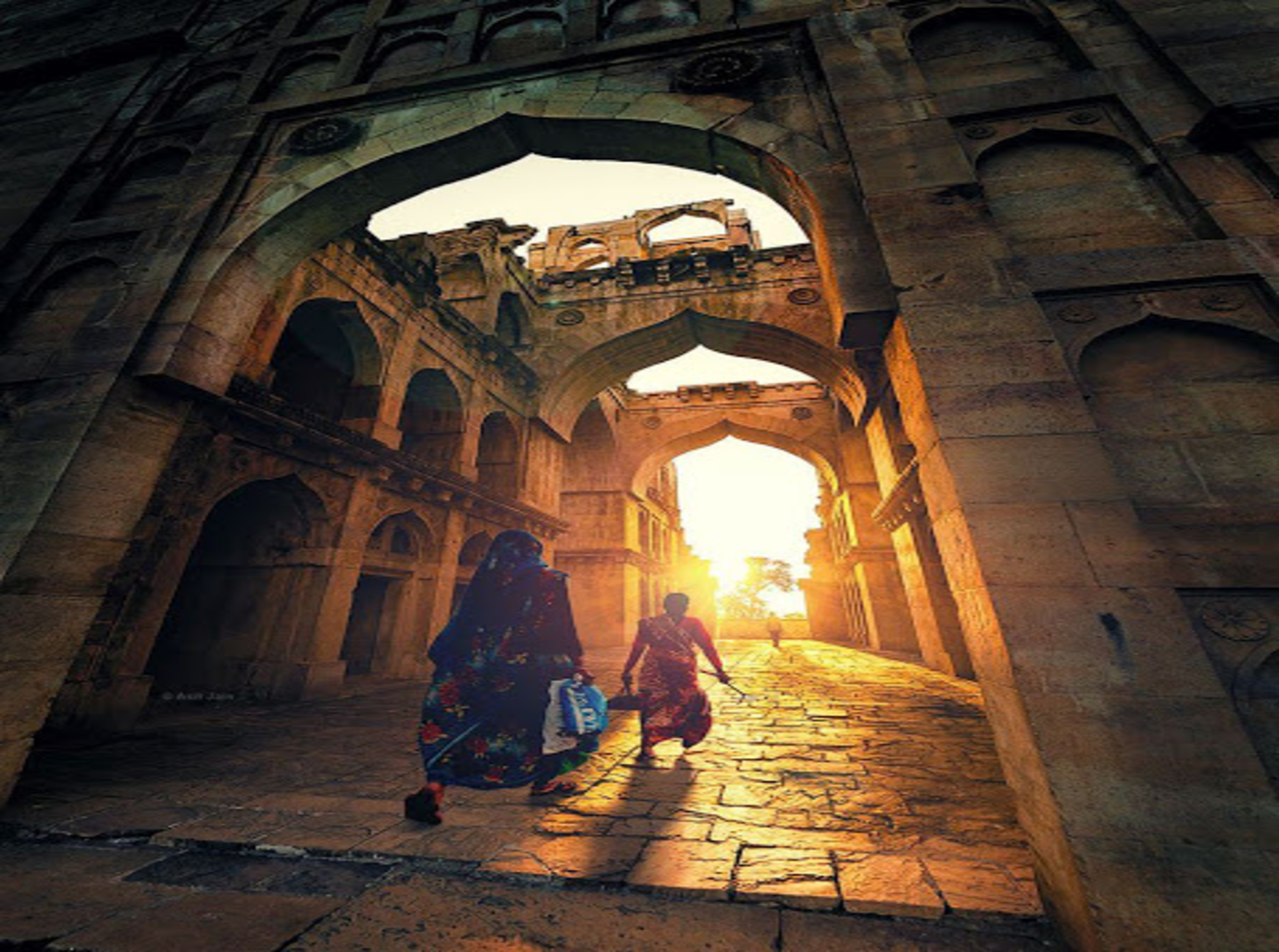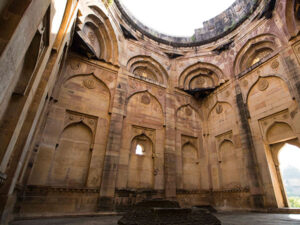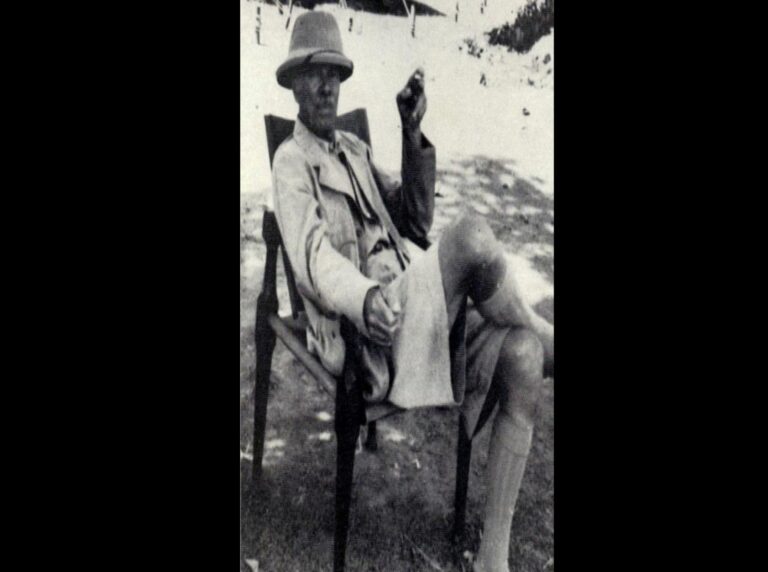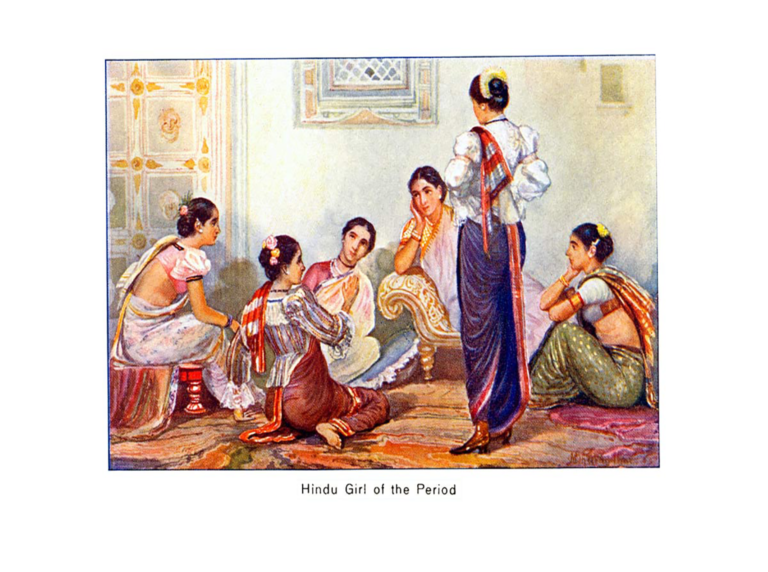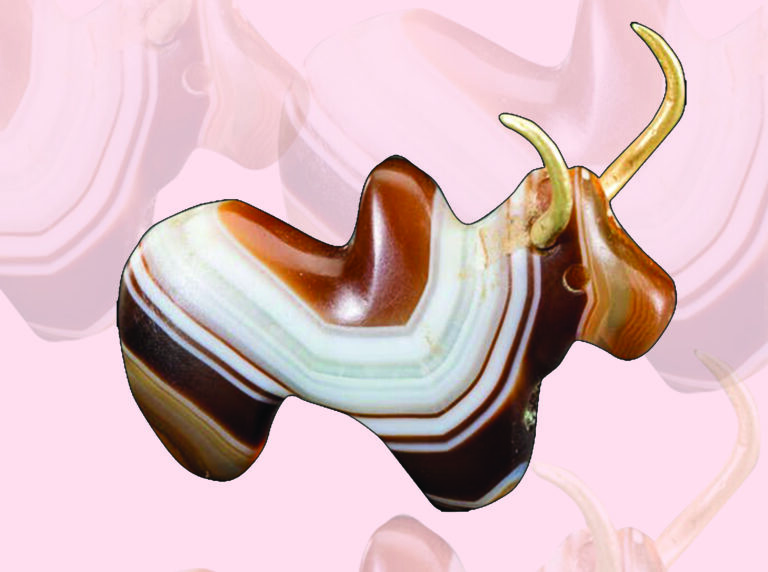Dr. Munmun Mondal
We have all been awed by the beautiful Chanderi fabric, and yet we know so little about it. Here’s a tribute to this gorgeous weave that has never failed to fascinate us.
 The Village Chanderi
The Village Chanderi
The chanderi textile that has stolen millions of hearts around the world originates in a small town of Chanderi in Ashok Nagar District of Madhya Pradesh on the borders of Bundelkhand & Malwa. The city dates back from the 11th century to the 18th century and has witnessed the many ups and downs of history. River Betwa is flowing closely to this historical city. The town has 272 monuments and about 30,000 people, where almost every houses have a loom.

Location pf Chanderi
Historical record says, Chanderi was ruled by Pratihara’s and then by Kachchwa Rajputs, Delhi sultanate, Bundela’s and Scindia’s respectively. Chanderi was mentioned as a sprawling city full of big bazaars filled with people and goods by Ibn Batuta in the travelogues who visited this town in about 1342 CE.
Chanderi Mughal Fort
The city became one of the most important trade routes in India because of its proximity to the arterial routes to the ancient ports of Gujarat, Malwa, Mewar, Central India and Deccan regions.

Badal Mahal Darwaza
The Ain-e-Akbari, written by Abul Fazl during the Mughal emperor Akbar’s reign, talks about the fine weaves of Chanderi. Ma’asir-e-Alamgiri (1658-1707), , written during Aurangzeb’s reign, highlights the existence of an imperial workshop in Chanderi which produced an extremely fine cloth, with gold and silver work into it. The 1907 Gazetteer of the Princely state of Gwalior confirms the continuation of the old tradition of weaving in Chanderi. It also states that during the reign of the Bundelas, the cloth was marked with their seal which consisted of a crown flanked by two prancing lions.
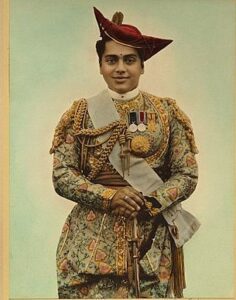
Portrait of Maharaja Sir Jiwaji Rao Scindia
Gwalior
Madhya Pradesh, Central India
19th Century
Photograph
Maharaja Sir Jiwaji Rao Scindia in Royal Maratha Attire with Chanderi Sindhesahi Pagdi, Angarkha, Paijama and Dupatta.
In 1910, Chanderi was patronized by the Scindia royal family of Gwalior and still the tradition continues. It was during that period when gold border made its presence in the cotton muslin sari for the first time embellished with gold motifs which became favorite among the royal queens.
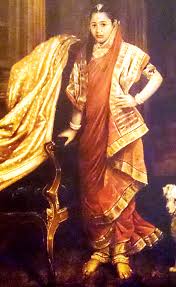
Maharani Chimnabai of Baroda
Baroda
Gujarat, Western India
19th Century Painting
Artist: Raja Ravi Varma
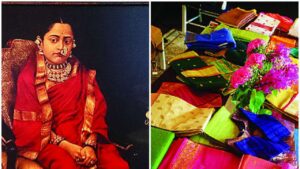
Royal Ladies of Baroda
Baroda
Gujarat, Western India
19th Century Painting
Artist: Raja Ravi Varma

Maharani Vijaya Raje Scindia in Chanderi Saree
Gwalior
Madhya Pradesh, Central India
19th Century
Photograph
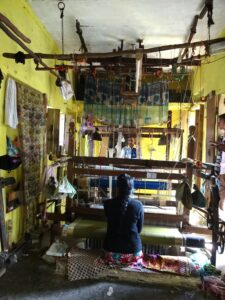
Weavers and their Creation
This ancient art of weaving has passed down through generations creating a group of skilled weavers and artisans whose work can never by replaced by the power loom. The fine count cotton for Chanderi was extracted from a special root called the Kolikanda. Light yet strong, it gave the fabric a glossy finish. The fabric is woven with warp (tana), stretched out set of threads, through which the weft (bana) is passed through in regular motion. Tansparency and sheer texture are the two most distive charactarestics of this fabric which is the consequnce of single flature quality of uarn used.
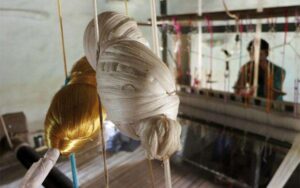
Chanderi Silk Yarns
The yarn used to weave Chanderi fabric doesn’t go through the degumming process to prevent breakage during weaving, giving the fabric its unique shine and texture. A product intricately woven by hand interspersed with the delicacy of the extra weft motifs that has for times immemorial satisfied the refined tastes of the royalty. This exuberant weave are mostly found in soft pastel colours. Chanderi sarees are protected under the Geographical Indication of Goods (Registration and Protection) Act, 1999, and they cannot be copied because of their exclusive design and the special silk yarn that goes into their making. The Government of India has also petitioned to the World Trade Organization for the recognition of this textile on an international level.
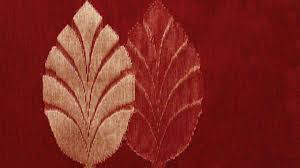
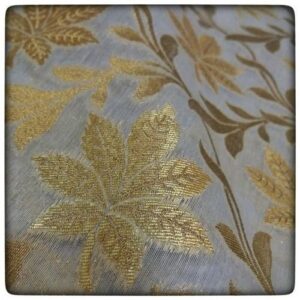

Designs on Chanderi : An Exclusive art
The motif designs embellished on Chanderi fabrics are so intricate and so unique from each other that every Design tends to tell its own story. The Chanderi produces three kinds of fabrics: Pure Silk, Chanderi Cotton and Silk Cotton. The motifs have come a long way from the traditional coin, floral and peacocks to the geometrics. Figures of animals, celestial figures, are some of the unique motifs can be seen nowadays.
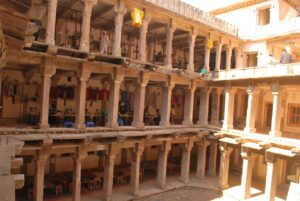
Raja Rani Mahal : A Weavers Hub
The present Scindia royal family of Gwalior are tirelessly working in preserving, recreation and redesigning this traditional weave for last five decades. Some of their magnificent contribution in this regards are the Renovation of beautiful architectural and historical remains ‘Raja Rani Mahal’ and converted it into a weaver’s community, project Chanderiyaan, bringing the famous designers of India under one roof to put this regal traditional weave into a contemporary fashion to home décor are worth mentioning.

Project ‘Chanderiyaan’:
In 2009 Digital Empowerment Foundation in collaboration with Media Lab Asia and Ministry of Communication and information Technology started this project Chanderiyaan with the vision of preserving traditional skills while incorporating modern technology to enhance the output, improve the livelihood of the present weavers and create employment opportunities for the next generation who are trained in all aspects of weaving.
The use of Chanderi fabrics at the fashion week gives a platform to this handloom fabric. It has always been popular for designing enticing saris but consistent experimentation done with chanderi by the different fashion designers who have reinvented it to suit the contemporary taste at the same time paying tribute to the sartorial fashion sense of the Indian royals in the fashion show ‘Road To Chanderi’ in Amazan Fashion Week, March 2011. Introducing Chanderi as home decor by Fab India like cushions, curtains is also a turning point for this royal weave.

Beauty of Chanderi Cushion Cover by Fab India

Fab India’s Chanderi Silk Curtain
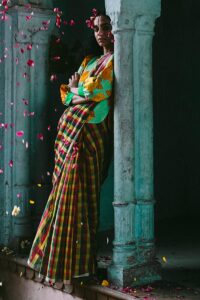
A Life Measured in Yards and Meters : Chanderi saree by Raw Mango
Sanjay Garg of Raw Mango started with saris and introduced bright borders and drapeability in the fabric to make it more wearable. His handloom evangelism helped mainstream the sari to become a fashionable attire.

Models in Lakme fashion week Summer/Resort 2011 in Chandri western Outfit
Vijay Balhara’s Collection “Rustic Sophistication” displayed at Lakme fashion week Summer/Resort 2011 showcased a beautiful blend of Chanderi and Cotton outfits inspired with vibrant color palette of lavender, fuchsia, turquoise, ivory, white and olive. It was a total amalgamation of contemporary outfits with a traditional touch. The collection had flared mul blouses, boho dresses, tunics with gathered hems, summery pants, paisley embroidered skirts accessorized with traditional jewelry.

A New Lease of Life for Chanderi
The beauty of Chanderi does not stop here. The charm of this magical fabric is inspiring Interior and fashion designers all over the world to play with it infinitely to create more and more designs. We would love to see the magic of Chanderi fabric in coming years. The best part is that, slowly with course of time this 500-year-old traditional weave has become a part in global women’s wardrobe and accepted in the 21st century with much love and passion.
Acknowledgement:
- The Art of Chanderi by R. Nath, 2018, Kindle Edition.
- http://en.wikipedia.org/wiki/Chanderi
- Mr. Motamal and Villagers of Chanderi.
- Dr. Madhuvanti Ghose, Alsdorf Associate Curator of Indian, Southeast Asian and Himalayan Art, The Art Institute of Chicago, U.S.A.
- Dr. Vandana Sinha, Director, Center for Art and Archaeology, American Institute of Indian Studies, Gurugram, Haryana, India and her team members.
- Online Photo Courtesy as per sequence:
https://images.app.goo.gl/qNmDQmN4k9qoGRpYA
https://uploads/2017/07/District-Map-of-Chanderi.jpg
https://images.app.goo.gl/e7gcLVAZJMPVxo34A
https://images.app.goo.gl/tX3jf7ZHbu8K3SBQ9
https://images.app.goo.gl/VyvSzvTgcNmfJH527
https://images.app.goo.gl/g71SLz5UgTwDXMsc8
https://images.app.goo.gl/mYpz4ZKNcsunwcNz9
https://www.pinterest.com/pin/395894623493391197/
Pinterest / Fabindia
https://www.pinterest.ie/pin/511228995203363975/
explosivefashion.in/Vijay Balhara
https://www.pinterest.com/pin/408279522450806428/
